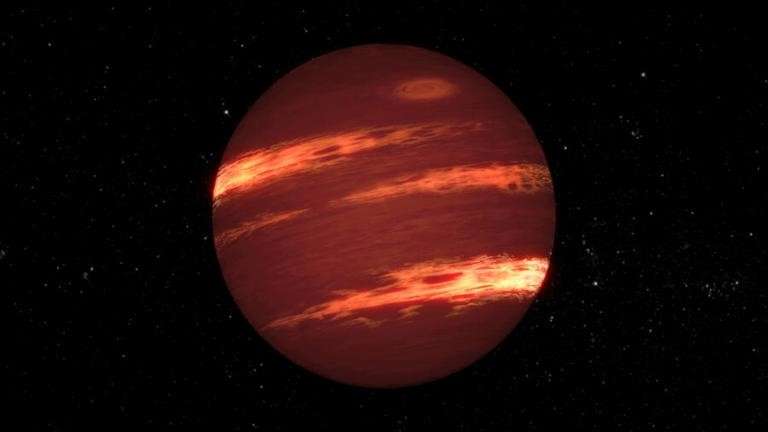The James Webb Space Telescope has been photographing deep space for weeks, giving the world and astronomers more detailed views of far-distant planets and stars.
The portrayed planet, called VHS 1256 b, is what is known as a brown dwarf. This name is given to planets that are not large enough to flare into stars, but too large to be considered a normal planet. It is 72 light-years away, in the constellation of Corvus.
Scientists determined that it is enveloped in clouds of sand-like silicate grains. It was discovered in 2016, but now we’ve been given a much more detailed look.
It is 20 times the size of Jupiter. Brown dwarfs don’t burn hydrogen like most other planets, but they do produce their own light and heat by burning deuterium. Astronomers believed that the planet’s reddish glow was due to the atmosphere, which has now been determined to be wild and turbulent.
Astronomers have discovered water, methane, carbon monoxide, carbon dioxide, sodium, and potassium in its atmosphere.
Astronomers have been studying it since its discovery. According to Brittany Miles, an astronomer at the University of California, Irvine, and principal investigator of the project, “We will learn more from the iterations on data reduction. So far, it seems pretty similar to theoretical expectations.”
The collected data determined that HSV 1256 b is quite small for a brown dwarf. Also, it rotates 360 degrees around the sun, is oval in shape and takes about 17,000 years to complete its orbit.
The James Webb Space Telescope has been operating since December 2021. So far, it has sent captivating images back to Earth.


















